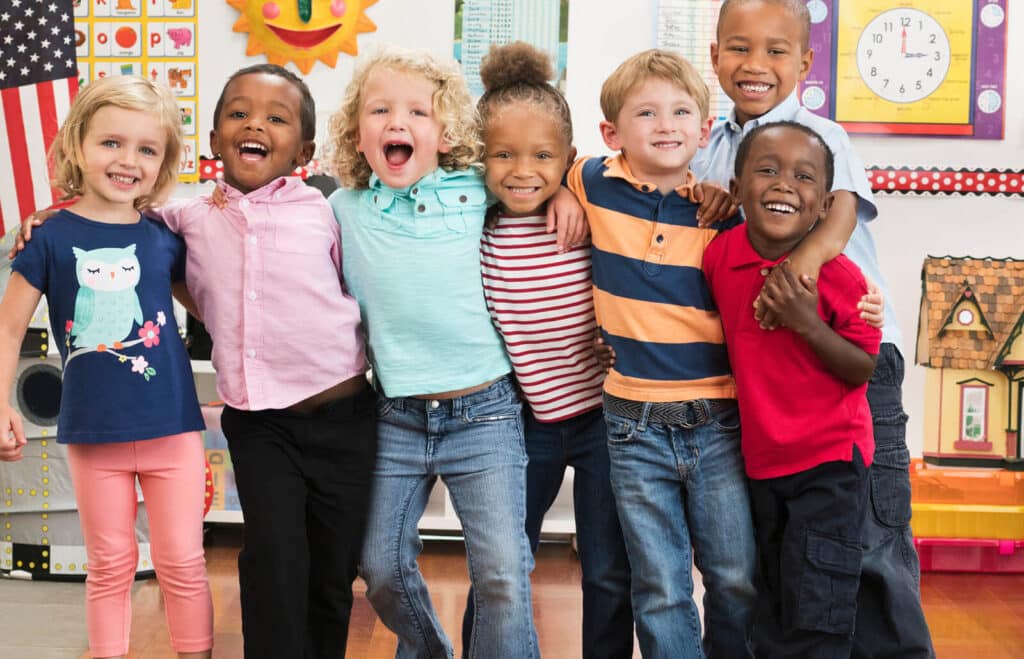Cultural Studies are an important part of the Montessori curriculum. Cultural Studies broaden children’s understanding of the world around them and their place in it.
Montessori teaches culture through biology, geography, history, botany, zoology, music, and art. These subjects are taught through hands-on child-directed activities, found in the Cultural Studies area of the prepared environment.
By exploring the subjects covered in Cultural Studies, children learn about the interconnectedness of all life. So, what exactly is Cultural Studies, and how is it taught in a Montessori environment?

How Does Montessori Teach Culture?
Cultural Studies in the Montessori curriculum refers to a collection of subjects that teach children about the world around them. These subjects, geography, history, botany, zoology, art, and music, help children to develop a holistic understanding of different cultures.
Cultural studies in early childhood is a unique aspect of the Montessori method, as children are typically introduced to history and geography at a later age.
Cultural Studies is taught through the use of hands-on Montessori materials. The prepared environment of the Montessori classroom has a specific area dedicated to Cultural Studies, called the Cultural Area.
New concepts in Cultural Studies are first introduced by the Montessori guide, in the form of dramatic stories. These lessons are designed to spark the children’s imaginations and intrest. The stories are usually accompanied by a tangible object or sensory experience to help the children understand the concept being taught in the lesson.
Cultural Study materials cover each area of the Cultural Studies curriculum. Often the subject material of the subjects covered in Cultural Studies overlaps, which is why in Montessori, they have been combined to deliver a holistic view of the world. Simply put, Cultural Studies show children the different people, plants, and continents that make up the world.
Cultural studies explore different cultures in a way that introduces children to what people in other parts of the world wear, how they speak, what they eat, what they see and create.
Cultural Studies are taught through the use of great lessons, which form the basis and core of the Cultural Studies curriculum. These lessons are introduced at the beginning of the year. The lessons are The Creation of the Universe, which describes how our universe came into existence. The Coming of Humans, explains how humans evolved and why we are different from other animals. The next lesson, is Communication in Signs, which discusses how humans developed written language. The final lesson is the Story of Numbers, which explains how humans developed mathematics.
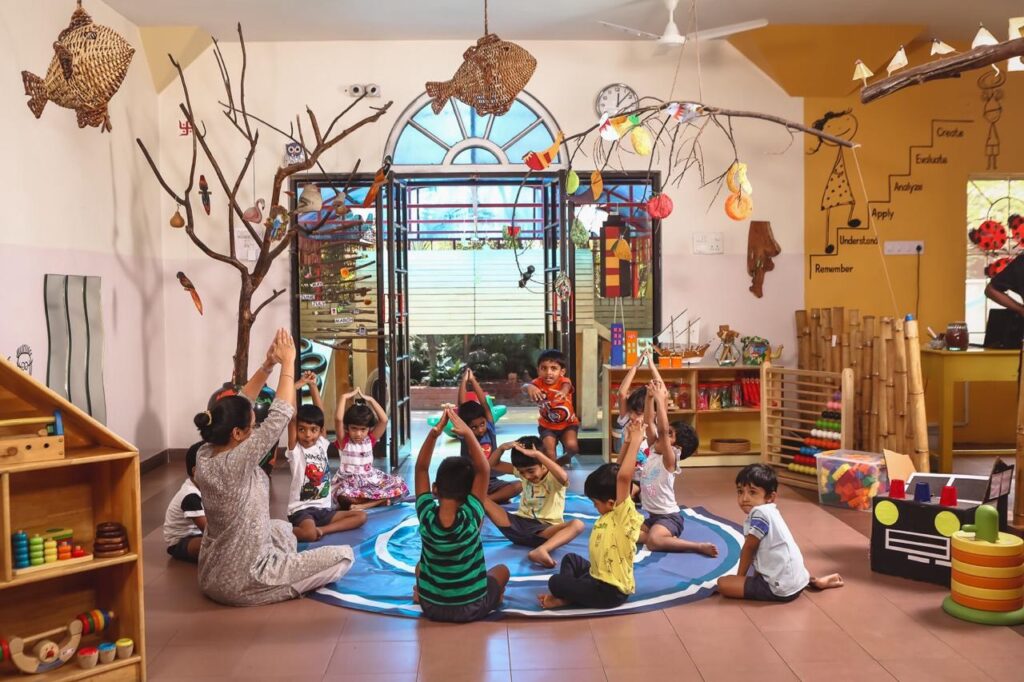
The subjects in cultural studies are taught in the following way:
History: Using the Montessori method history is taught through the introduction of timelines and stories. The stories correspond to the timeline. History in early childhood classrooms begins with learning the days of the week and the names of the months. Children learn the history of the universe by tracing the evolution of the planet. Children learn about all aspects of history from the earliest humans to ancient civilizations.
Geography: Physical geography is taught by introducing children to the names of the continents and what countries lie within the continents. Children learn about the different types of land and water formations in the world.
Cultural Geography: Cultural geography refers to the geography, climate, fauna, and flora of the different regions of the world. The subject also includes how these factors affect the people who inhabit those regions. Children learn the flags of each country and what language is spoken.
Zoology: Children learn to classify animals. Children learn about the different families of animals within the animal kingdom, the basic characteristics of each group, and how they survive. Children learn the different body parts of each animal. Often there is an animal in the Montessori classroom that the children must care for.
Botany: Children learn to identify plants by recognizing the characteristics of the many different types of plants, such as leaf shape, color, size, etc. Through the study of botany, children learn how plants grow, where they grow, and why. As with animals, children learn about botany through the observation of the life cycle of plants in the classroom and in nature.
Music & Art: Music and art fall under the Cultural Studies category. Songs and dances are introduced when learning about different cultural regions. Art is used as an accompaniment to the other cultural studies subjects, for example, if a child would like to paint a picture of a plant or animal they have learned about or observed. Art from around the globe is used to show children the different styles found within different cultures.
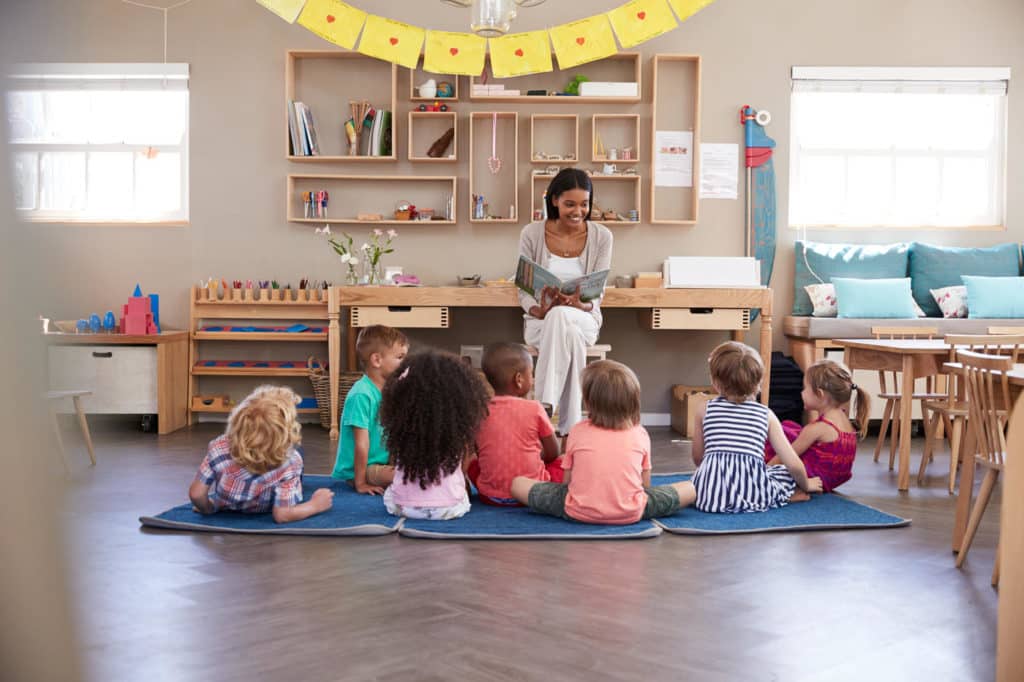
What is the Reason for Cultural Subjects in Montessori?
Cultural Studies are taught in Montessori to help children to develop their curiosity about the world around them. Introducing young children to subjects such as geography and history will encourage a natural desire to seek more knowledge within these subjects.
Cultural studies aim to answer the child’s questions of ‘who am I?’, and ‘Where did I come from?.’ The Montessori Cultural Studies curriculum provides children with an understanding of where they live in the world, what their community looks like, and what other communities in the world look like.
The Cultural Studies curriculum aims to take advantage of the natural sense of wonder and curiosity children possess when examining the world around them.
During Cultural Studies, children learn about the different continents and countries of the world, but also about the people, fauna, and flora that live there. Cultural studies explore the different customs, food, language, clothing, and rituals of the many different cultures that shape our world.
As children grow and move to the next level, the focus of the Cultural Studies curriculum shifts slightly. In later grades, the focus is on showing the children that they are a part of a global community.
“There must be provision for the child to have contact with nature; to understand and appreciate the order, the harmony and the beauty in nature.”– Dr. Maria Montessori
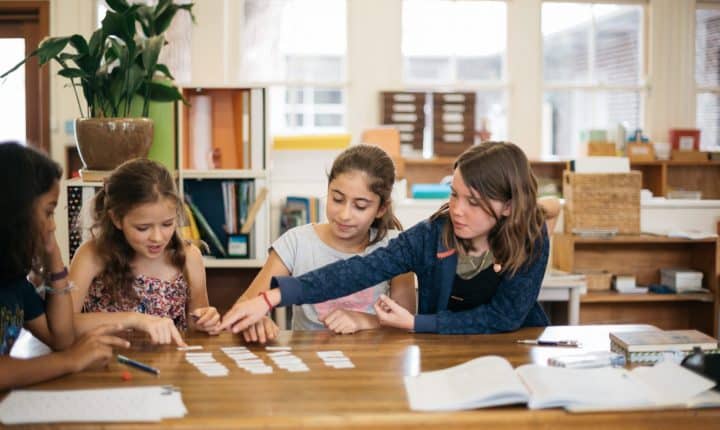
What are Cultural Activities in Montessori?
Each subject that falls under the umbrella of Cultural Studies has a collection of carefully designed Montessori materials to complement the curriculum. Cultural Studies incorporate an array of topics and lessons. Although the subject is broad, it has been purposefully designed to help children understand the world they live in.
Geography
One activity used to teach Geography in early childhood involves the use of two globes. The first globe shows the different water and land areas of the world. The land is shown as brown sandpaper and the water is smooth and blue. The second globe is to introduce children to the seven continents of the world. Each continent is given a distinct color.
There is a continuation of the colors used in the wooden puzzle maps of the continents and countries of the world. Guides then show the children culture-specific materials that correspond to the countries or continents. These mateials include food and photographs of landmarks. Guides even play music from the region.
History
The study of history can be incorporated during some of the geography activities and lessons. History begins with helping children to understand time as a measurable unit. Children are first introduced to this concept through the Birthday Walk. This is a favorite activity in the Montessori classroom!
The Birthday Walk involves a globe and a candle. The activity is done a few days before a child’s birthday. The child walks around the globe holding the candle, the same amount of times as their age. The candle represent’s the sun. After they have done this, the child shows the class pictures of themself at every age. These pictures are then displayed on a classroom wall in the form of a timeline.
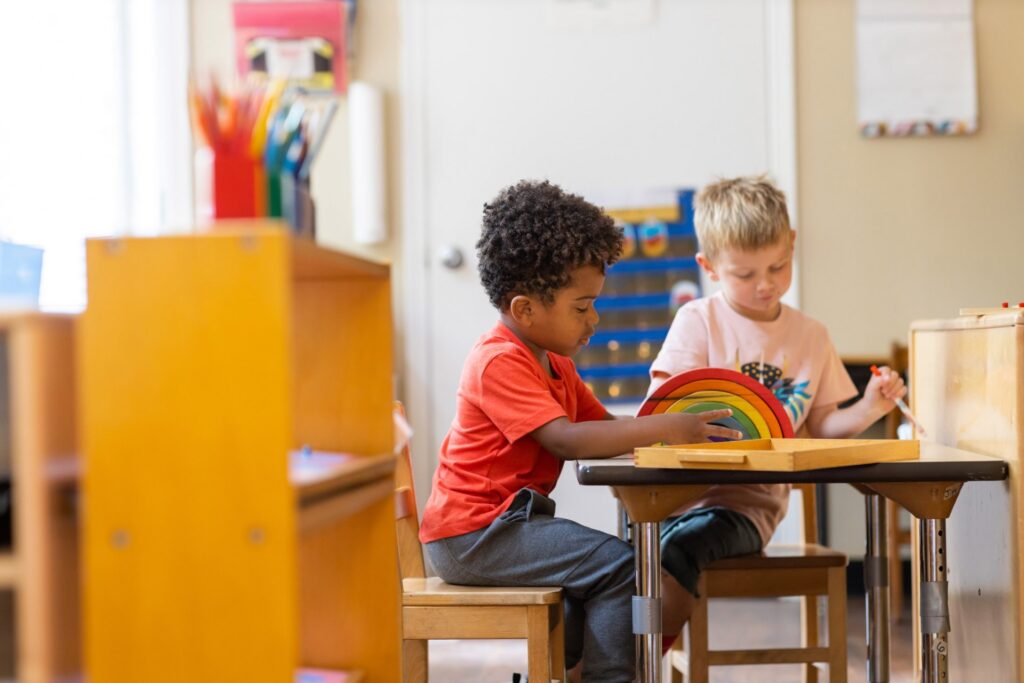
Botany
One of the earliest activities children in a Montessori environment engage with for the study of botany, is working with wooden puzzles. These large knobbed wooden puzzles are of leaves, trees, and flowers that separate into each part of the plant. Another activity would be planting seeds to grow and care for in the classroom or garden.
Science
Science is introduced by exploring objects found in nature such as rocks, and shells. Children examine these items under a magnifying glass. Simple experiments are performed with the objects such as seeing if the object will sink or float.
Zoology
When studying zoology children are introduced to the subject by first understanding the difference between living and none living things. A Zoology activity would be organizing photographs and objects into groups based on if they are living or non-living.
Music and Art
Music and art are important cultural studies subjects, as all humans dance, sing, and create art. A music activity that can be found in the Montessori environment would be signing songs from other cultures around the globe. Musical instruments native to different regions can also be found in the Cultural Area of the classroom.
Art is included in various ways throughout the Montessori classroom. For example, it can be used when teaching geography. When working through a continent puzzle questions surrounding artists are asked, “such as what artists lived there?”, “Is there a famous painting from the region?”, “what museums are there?”.
In addition to drawing, painting, and sculpting, there are several other crafting activities that students can participate in. Some practical life activities fall under art or crafting, such as cutting, sewing, and weaving.

What is the Culture Area in Montessori?
The Cultural Area of the Montessori classroom is a vibrant and interesting area of the prepared environment where children get to explore a myriad of materials. The Cultural Area of the prepared environment is organized into sections representing each subject included in the curriculum.
Within the area, you might find a history table, which holds a collection of items related to the concepts in the history curriculum. History cards that deal with the needs of humans are another material often found in the Culture Area.
The Cultural Area is where the large knobbed wooden puzzles are kept. Here you will find the colorful continent puzzles and the puzzles that complement the topics covered in botany and zoology.
The area may have multicultural posters adorning the walls, as well as timelines of the lives of children in the classroom. It is the area in the prepared environment where children can engage in hands-on experimentation with objects such as rocks and shells or draw the different components of a flower.
Cultural Studies in Montessori allow children a chance to grasp just how large the world they live in is. Cultural Studies show children just how culturally diverse the countries of the world are. Cultural Studies allow children a chance to explore their culture and help shape their worldview from a young age.

